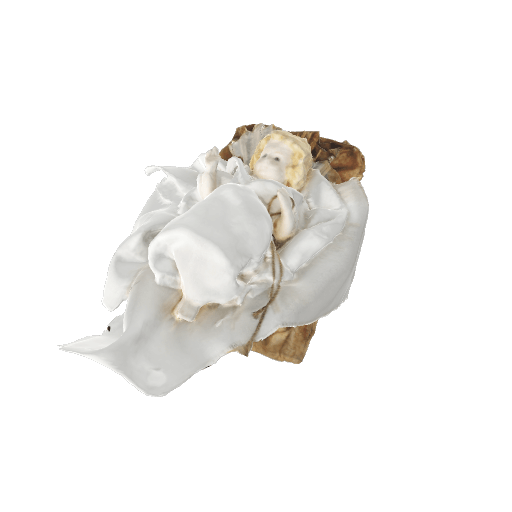Baby Jesus
This wax sculpture represents Jesus as a newborn. Wax Jesus figures like this one are often found in Nativity scenes at Christmas time. This Christian holiday is an important celebration for the faithful, as they celebrate the birth of Jesus Christ, considered to be the son of God. The Nativity scene is a representation of the circumstances of Jesus’ birth. It consists of a stable with different characters (Jesus, Mary, Joseph, the three Wise Men), animals (oxen and donkeys), and sometimes angels and shepherds.
The manufacture of wax baby Jesus statues in North America began as early as the time of New France. The Ursulines and several other religious communities of women have maintained this know-how until today.
After moulding the statuette using wooden moulds, the nuns add hair, design the costume, and paint it. Wax has the advantage of being inexpensive, easily malleable and having a skin-like appearance. These statuettes are made in winter since the wax is difficult to handle during the summer because of the heat. This craft is passed on from nun to nun.
References
Date: 1919
Origin: North America
Owner: Fabrique de la paroisse Saint-Donat. Saint-Donat.
Sources:
Gaumond, C., & Bouchard, R. (with Plourde, P.). (n.d.) La fabrication des jésus de cire chez les Antoniennes de Marie [The crafting of wax jesuses by the Antoniennes de Marie nun community]. L’inventaire du patrimoine immatériel religieux du Québec (IPIR). Retrieved July 25, 2022, from http://www.ipir.ulaval.ca/fiche.php?id=178
Redmond Morissette, M., & Nogradi, A. (with Labonté, R.-M.). (n.d.). La fabrication des jésus de cire chez les Recluses missionnaires [The crafting of wax jesuses by the missionary Recluses]. L’inventaire du patrimoine immatériel religieux du Québec (IPIR). Retrieved July 25, 2022, from http://www.ipir.ulaval.ca/fiche.php?id=155
